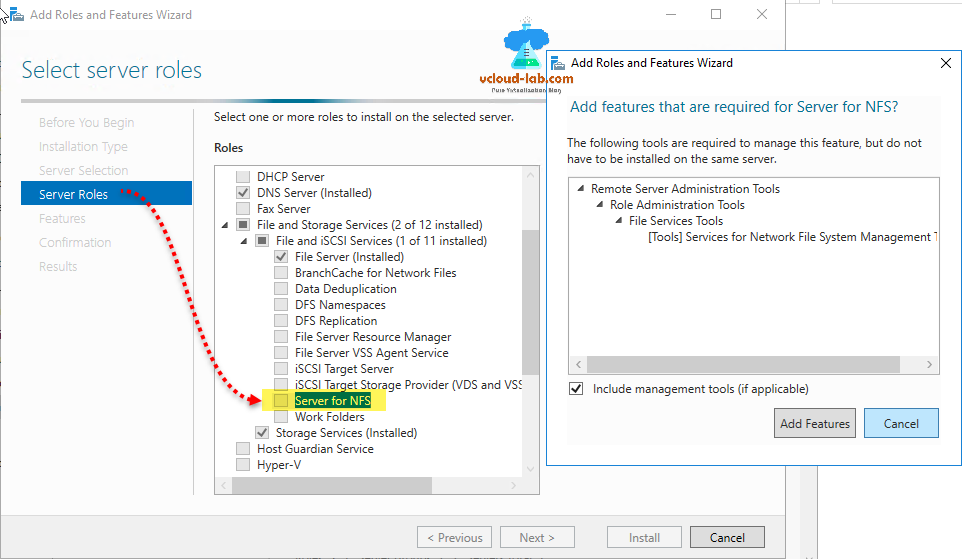
- Nfs manager windows how to#
- Nfs manager windows install#
- Nfs manager windows windows 10#
- Nfs manager windows free#
One way is to use the mount command in the Command Prompt. There are a few different ways to mount an NFS drive in Windows. Mount.nfs 192.168.1.100:/mnt/data -o nolock How do I mount an NFS drive in Windows? However, you will also need to specify the -o option with the nolock flag. To use the mount.nfs command, you will need to know the same information as above. For example, if the NFS server has an IP address of 192.168.1.100 and the path to the share is /mnt/data, you would use the following command: To use the mount command, you will need to know the IP address or hostname of the NFS server, as well as the path to the share that you want to mount. Another way is to use the mount.nfs command in PowerShell. There are a few different ways to mount an NFS share on Windows. Use the Windows Event Viewer to check for any NFS-related error messages. This process is responsible for mounting NFS shares on Windows.ĥ. Use the Windows Task Manager to check if the nfs.exe process is running. If the share is successfully mounted, you should be able to access it like any other network share.Ĥ. Try accessing the NFS share from the Windows client. Check the NFS server logs to see if the Windows client is successfully connecting and mounting the share.ģ. Use the mount command to see a list of all mounted NFS shares:Ģ. There are a few different ways to check if an NFS mount is working on Windows:ġ. The mount point can be an empty directory or a directory that already contains files. NFS shares can be mounted on any directory on the client machine.
Nfs manager windows how to#
Consult the documentation for your software package for instructions on how to do this. Once you have installed the software package of your choice, you will need to configure it to access your NFS server. ExpanDrive provides a graphical user interface for accessing NFS shares.
Nfs manager windows install#
Once Cygwin is installed, you can use the NFS client to access NFS shares.Īnother option is to install the commercial software package ExpanDrive.
Nfs manager windows free#
One option is to install the free and open-source software package Cygwin. There is no built-in support for NFS on Windows 10, but you can install third-party software to access NFS shares. You should now be able to access the NFS file system via the mount point that you created. For example, to mount an NFS file system located at 192.168.1.100:/export/data, you would use the following command: Once the mount point has been created, you can mount the NFS file system by using the mount command. For example, to create a mount point called /mnt/nfs, you would use the following command:Ĥ. To do this, you can use the mkdir command.

Once the NFS server package is installed, you will need to create a mount point for the NFS file system.ģ. To mount an NFS file system, you will need to have the NFS server package installed on your system.Ģ. Once you have the NFS client installed, you can use the mount command to mount the NFS share. To do so, you will need to have the NFS client installed. Yes, you can mount an NFS share on your system. New-PSDrive -Name N -PSProvider FileSystem -Root server1:/mnt/nĬan you mount NFS in Windows 10? Can I mount NFS share? New-PSDrive -Name -PSProvider FileSystem -Root :įor example, if you want to mount an NFS share at /mnt/nfs on the server named server1, you would run the following command: To mount an NFS share using PowerShell, open PowerShell and run the following commands: Make sure to select the Reconnect at sign-in checkbox and click Finish.

For example, if the NFS share is at /mnt/nfs, you would enter \\server\mnt\nfs. In the Folder field, enter the path to the NFS share. Then, click on the Computer tab and select Map Network Drive.
Nfs manager windows windows 10#
To mount an NFS share using the built-in Windows 10 NFS client, open the File Explorer and click on This PC.

You can use the built-in Windows 10 NFS client, mount the share using PowerShell, or use a third-party NFS client. There are a few different ways to mount an NFS share in Windows 10.


 0 kommentar(er)
0 kommentar(er)
